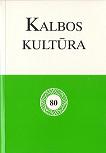Lietuviška ir nelietuviška sangrąža
Lithuanian and non-Lithuanian reflexive
Author(s): Jonas KlimavičiusSubject(s): Language and Literature Studies
Published by: Lietuvių Kalbos Institutas
Keywords: Reflexive forms; reflexive verbs; non-reflexive verbs,
Summary/Abstract: Under the influence of dialects and foreign languages, the usage of reflexive and non-reflexive verbs in the actual language use still abounds in a variety of errors. The expression of non-Lithuanian reflexive with the pronoun save is spreading fast. Among the most frequent examples are those containing *pateikti save, *parodyti save and *pristatyti save, none of which are characteristic of standard Lithuanian. Non-reflexive forms replacing reflexive forms in a clearly folkloristic context (e.g. ?prausti veidelį) are on the increase (cf. expressions referring to the experiencer or agent: *sulaužyti koją, *pažymėti bilietą) and thus the distinction of reflexive forms is reduced. However, reflexive forms are widely and unacceptably used when the action/activity cannot possibly refer to the doer of the action, e.g. *parsiduoda namas, *išsiparduoda paukštiena, *karvė baigia melžtis. The meanings and usage of reflexive forms have been widely described in the academic three-volume Grammar of the Lithuanian Language (Lietuvių kalbos gramatika, 1971, v. 2, para. 268-289, i.e. 24 pages all in all). In the new Grammar of Contemporary Lithuanian (Dabartinės lietuvių kalbos gramatika, 1994 and 2006, para. 823) the use of reflexive forms has been described insufficiently. All the issues discussed above should be included into the Guidelines of Language Use (Kalbos patarimai).
Journal: Bendrinė kalba (iki 2014 metų – Kalbos kultūra)
- Issue Year: 2007
- Issue No: 80
- Page Range: 97-106
- Page Count: 10
- Language: Lithuanian

